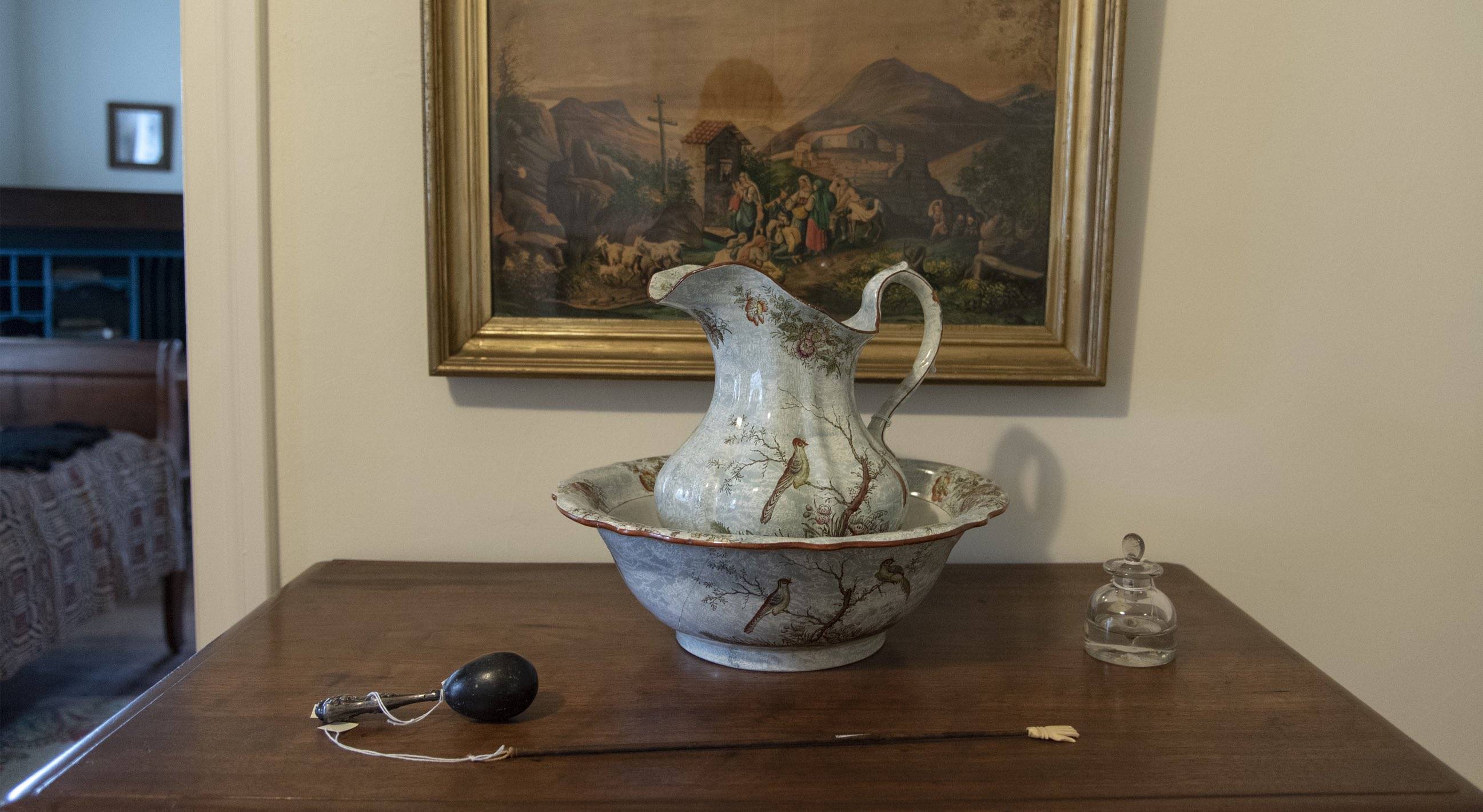
A passion for presenting history
by Travis E. Poling
Scholars challenged to make creative displays, collections
Justin Ball is surrounded by a collection of historic buildings full of furniture, housewares, tools, and more aged knickknacks than he has room to store properly. Each piece at the Museum of Texas Handmade Furniture tells a story tying it to the early history of the state. For Ball, each item and structure also comes with a challenge.
“Finding inventive ways to get people interested has become a full-time job in itself,” says Ball, executive director of the New Braunfels museum and a graduate student in public history at Texas State’s Department of History. “It’s about taking massive amounts of information and breaking it down into bite-size chunks.”
Ball is just one of many public history students and graduates coming up with creative ways to gather, preserve, display, and present public history in museums, in archives, and within cultural organizations. Launched in 1997, the public history graduate program puts students deep into the people, places, cultures, events, and things that make up the past and living history of Texas and beyond. The creativity in the process comes in part from satisfying a specific audience or multiple audiences who might interact differently with the information.
“You have to think about the audience and work backwards,” says Dr. Lynn Denton, a professor in the Department of History and director of the public history program. In museums, “you have research and you have to figure out how to present that for different types of exhibit goers including studiers, speed walkers, and strollers,” she says of the speed with which people want to experience the information. “To create a narrative arc, you have to ask, ‘What images and documents can best say this without using a thousand words?’ ”
Recently, students have created interactive online maps to present the history of Texas bridges for the Texas Department of Transportation, discovered ways to make pictures of inanimate objects such as political campaign buttons accessible for publication by the LBJ Presidential Library, and unearthed the history of a goat barn on the Shield Ranch to determine if it was worthy of historical designation.
“Everybody loves history, but if you ask them, they don’t think they do. We have to figure out ways to engage them,” — Dr. Lynn Denton
“Sometimes we get jealous of the natural history museums because they get the dinosaurs and the sea creatures,” Denton says of displays that wow audiences with their size or oddity. Public history has documents, stories, and artifacts that can take ingenuity to get a reaction from the viewer.
“Everybody loves history, but if you ask them, they don’t think they do. We have to figure out ways to engage them,” Denton says. Technology, including creative uses of virtual reality, offers public history professionals new tools to give people a sense of place and being part of the history, she says.
Megan Blair Firestone (M.A. ’09), a former U.S. Air Force historian at Randolph and Whiteman Air Force Bases, was able to exercise her passion for presenting history in ways accessible to the public with projects such as an oral history of the first 10 female fighter pilots in the Air Force. She has taken on a very different challenge creating a new archival collection from scratch as part of her role as archivist for St. Edward’s University in Austin. While most archives come to university libraries as a donation of a body of work done by one individual or a private collection gathered over the years, Firestone set out last winter to gather items that tell the story of beer brewing in Texas.
While a handful of the state’s breweries, which now number more than 220, have donated items to the archive, the interesting task has been getting breweries to understand why everything from their incorporation papers to brewer’s notes and beer menus to label art might be important to future researchers.
“It doesn’t have to be old to be history. It’s the history of now,” Firestone says. “I’m telling them that we need more than flyers. What you’re doing now is important and we need to preserve it now before it’s lost. I’ve had brewers thank me for this. They are surprised someone is interested.”
In late 2018, Firestone began the process of collecting oral histories from those involved in Texas’ brewing history to capture what she can when documentation is long gone from early in the state’s brewing renaissance of the 1990s.
She is drawing on lessons learned from Dan Utley, public history lecturer and chief historian of the university’s Center for Texas Public History. “We learned to just sit back and listen,” how to ask questions and create a shared experience. “That’s part of my job, to keep those stories alive.”
Firestone is joining those bringing a new mindset to archives by going after history as it happens. “We need to think about who the groups are doing new things and tell them they need to save it,” she says. ✪